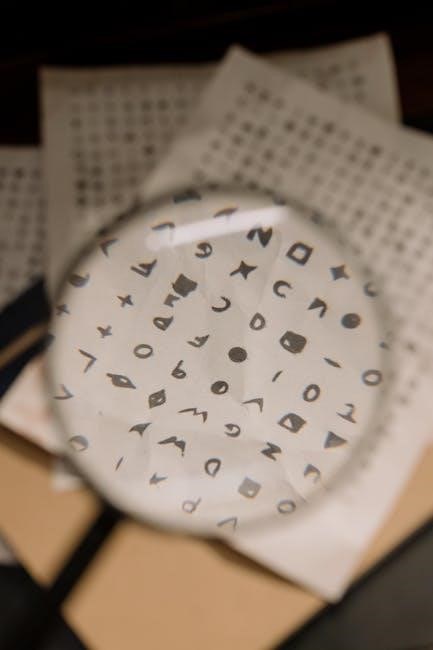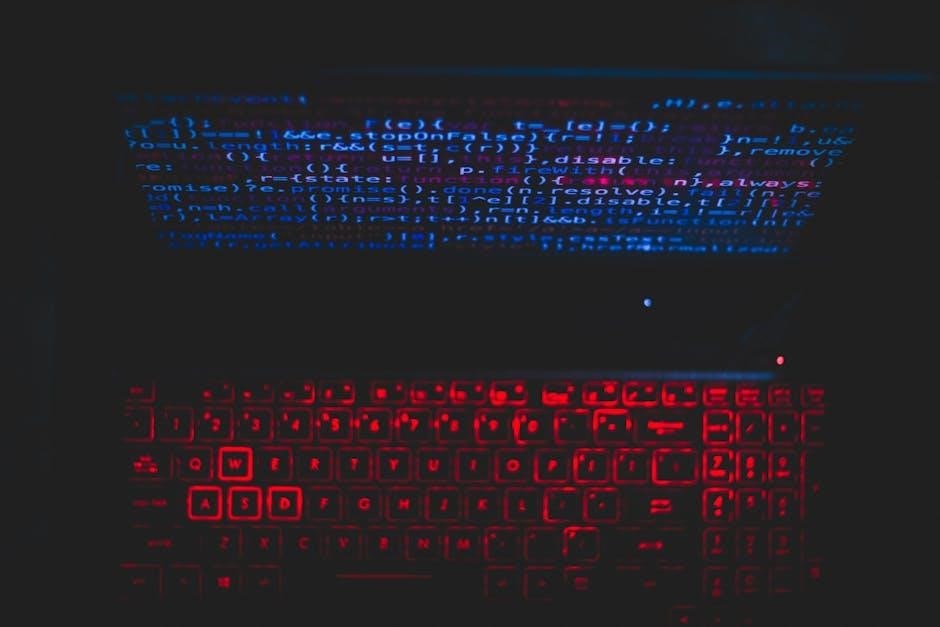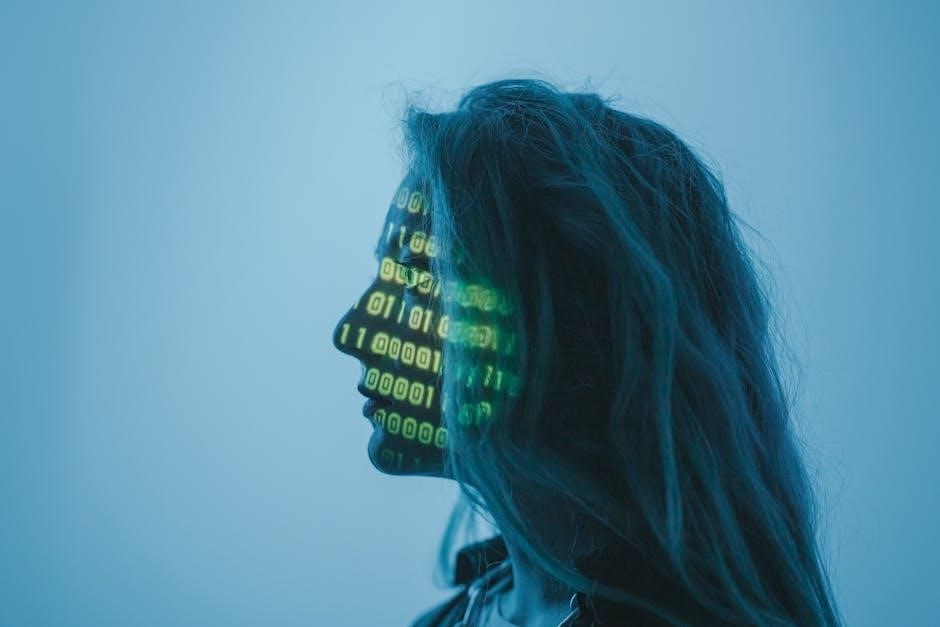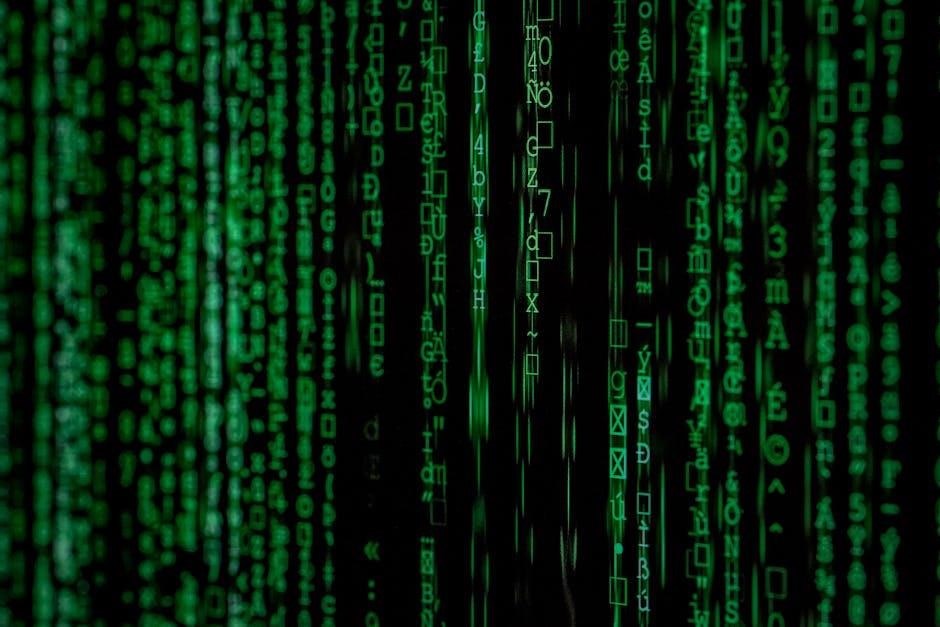The Da Vinci Code, a 2003 thriller by Dan Brown, masterfully blends art, history, and cryptography into a gripping tale of mystery and suspense. Starting with a murder in the Louvre, it follows symbologist Robert Langdon and cryptologist Sophie Neveu as they unravel ancient secrets and face danger.
1.1 Publication and Popularity
The Da Vinci Code, published in 2003, became an instant bestseller, topping charts worldwide. It is the second novel in Dan Brown’s Robert Langdon series, following Angels & Demons. The book’s digital version, including PDF formats, has been widely sought after, contributing to its massive popularity. However, its success has also led to piracy issues, making it one of the most pirated books in history. Its global appeal remains unparalleled.
1.2 Genre and Style
The Da Vinci Code is a gripping mystery thriller, blending elements of suspense, cryptography, and historical fiction. Dan Brown’s writing style is fast-paced and plot-driven, with intricate twists and cliffhangers that keep readers engaged. His use of art history, religious symbolism, and intellectual puzzles adds depth, making the novel both entertaining and thought-provoking. Brown’s accessible prose, despite criticism for its simplicity, has captivated a global audience.

Historical and Cultural Context
The novel explores historical mysteries tied to the Priory of Sion, a secret society protecting ancient truths, and Leonardo da Vinci’s symbolic art, challenging traditional perspectives.
2.1 The Priory of Sion
The Priory of Sion, a secret society founded in 1099, plays a central role in The Da Vinci Code. Mentioned in historical documents like Les Dossiers Secrets, it allegedly protected descendants of Jesus Christ and influential figures such as Leonardo da Vinci, Isaac Newton, and Victor Hugo. The society’s existence and purpose remain shrouded in mystery and controversy.
2.2 Leonardo da Vinci’s Art and Symbols
Leonardo da Vinci’s art and symbols are central to The Da Vinci Code. His works, such as the Mona Lisa and The Last Supper, contain hidden codes and clues that drive the plot. Brown draws on da Vinci’s fascination with anatomy, geometry, and spirituality, using symbols like the Vitruvian Man and anagrams to advance the mystery, blending art and history into a compelling narrative.

Main Characters and Their Roles
Robert Langdon, a symbologist, and Sophie Neveu, a cryptologist, lead the investigation into the Louvre murder, uncovering historical secrets and conspiracy theories tied to da Vinci’s art.
3.1 Robert Langdon
Robert Langdon, a Harvard professor of symbology, is a central figure in The Da Vinci Code. His expertise in symbols and religious art leads him to uncover the conspiracy surrounding the Holy Grail. Langdon’s analytical mind and knowledge of history drive the plot, making him a key player in solving the mystery alongside Sophie Neveu.
3.2 Sophie Neveu
Sophie Neveu, a French cryptologist, joins Robert Langdon in unraveling the mystery of the Louvre murder; Her expertise in codes and puzzles complements Langdon’s symbology skills. As the granddaughter of the murdered curator, Sophie’s personal connection to the case drives her determination to uncover the truth, revealing her resilience and intellectual brilliance throughout the thrilling adventure.

Plot Summary and Key Events
The Da Vinci Code follows symbologist Robert Langdon and cryptologist Sophie Neveu as they investigate a murder at the Louvre, uncovering a conspiracy linked to the Holy Grail and secret societies, filled with suspense and historical intrigue.
4.1 The Murder at the Louvre
The story begins with the shocking murder of Jacques Saunière, the Louvre’s curator, found dead in the museum. His body is discovered in a pose mimicking Leonardo da Vinci’s Vitruvian Man, with a cryptic message carved into his flesh. The murder sets off a chain of events as symbologist Robert Langdon and cryptologist Sophie Neveu are drawn into a deadly conspiracy tied to ancient secrets and hidden codes.
4;2 The Quest for the Holy Grail
The murder at the Louvre sparks a thrilling quest for the Holy Grail, tied to ancient legends and secret societies. Robert Langdon and Sophie Neveu uncover clues hidden in Leonardo da Vinci’s art, leading them to discover that Sophie is a descendant of Jesus Christ and Mary Magdalene. The journey reveals shocking historical truths and challenges religious beliefs, with the Priory of Sion protecting this secret for centuries.

Themes and Symbolism
The novel explores themes of religious mysteries, conspiracy theories, and the interplay of art and cryptography, weaving historical secrets with modern suspense to captivate readers.
5.1 Religious Mysteries and Conspiracy Theories
The novel delves into religious mysteries, exploring alternative histories of Christianity and the Holy Grail. It suggests Jesus had descendants, sparking a conspiracy involving secret societies like the Priory of Sion. Brown masterfully weaves historical and religious symbols with modern suspense, questioning traditional beliefs and highlighting the clash between ancient truths and institutional power.
5.2 Art, Cryptography, and Hidden Codes
Brown intricately combines art and cryptography, using Leonardo da Vinci’s works as puzzles. Symbols like the Vitruvian Man and The Last Supper hold hidden codes, guiding Langdon and Sophie through a labyrinth of clues. The novel showcases how art can conceal secrets, blending historical masterpieces with modern cryptographic techniques to create an intellectual adventure that captivates readers.
Literary Style and Structure
Dan Brown’s fast-paced narrative and short chapters create suspense, keeping readers engaged. His blend of intellect and thrills makes The Da Vinci Code a page-turner.
6.1 Dan Brown’s Writing Technique
Dan Brown’s writing technique in The Da Vinci Code combines meticulous research with a fast-paced narrative. His ability to weave historical, artistic, and religious elements into a thrilling plot sets him apart. Brown’s use of short chapters and cliffhangers keeps readers engaged, while his blend of intellect and suspense creates a unique reading experience. His writing challenges readers to question historical narratives and sparks curiosity about art and cryptography.
6.2 The Use of Cliffhangers and Suspense
Dan Brown masterfully employs cliffhangers and suspense to keep readers on the edge of their seats. Each chapter ends with a revelation or a new mystery, propelling the story forward; The intricate plot twists and unexpected turns maintain a high level of tension, ensuring that the novel remains unpredictable and engaging. This technique enhances the thriller aspect, making The Da Vinci Code a compelling page-turner.

Reception and Controversy
The Da Vinci Code sparked intense debates, praised for its thrilling plot and intellectual depth, but criticized for historical inaccuracies and anti-Christian themes, causing global controversy.
7.1 Critical Reviews and Public Reaction
The Da Vinci Code received mixed reviews, with critics praising its intellectual depth and thrilling plot, while others criticized its historical inaccuracies and perceived anti-Christian themes. The public embraced its unique blend of mystery, art, and religion, making it a global bestseller. Despite controversies, the novel sparked intense debates and attracted a wide audience, solidifying its place as a cultural phenomenon and a must-read for fans of the thriller genre.
7.2 Historical and Religious Criticisms
The Da Vinci Code faced intense criticism for its portrayal of religious history, particularly its depiction of Jesus Christ and Mary Magdalene. The Vatican and Catholic groups denounced the novel as blasphemous, while historians criticized its factual inaccuracies. The book’s sensationalist approach to sacred themes sparked outrage, though it also ignited global discussions about faith, history, and the boundaries between fiction and reality, solidifying its controversial legacy.

Adaptations and Media Impact
The Da Vinci Code was adapted into a successful film directed by Ron Howard in 2006 and a stage play, significantly influencing popular culture and historical interest.
8.1 The Film Adaptation
The Da Vinci Code was adapted into a successful film in 2006, directed by Ron Howard and starring Tom Hanks as Robert Langdon and Audrey Tautou as Sophie Neveu. The movie grossed over $217 million worldwide, sparking both acclaim and criticism. While it remained faithful to the novel’s core plot, some artistic liberties were taken, leading to debates about historical accuracy and religious themes. Its visual grandeur and suspenseful storytelling captivated audiences globally.
8.2 Stage Play and Other Interpretations
The Da Vinci Code has also been adapted into a stage play, captivating theater audiences with its intriguing plot and dramatic twists. Performances like the one at The Ogunquit Playhouse have brought the story to life, blending suspense and intellect. Beyond official adaptations, fan interpretations and creative analyses continue to explore the novel’s themes, adding fresh perspectives to its enduring legacy in popular culture.
Educational and Intellectual Value
The Da Vinci Code offers rich educational value through its exploration of art history, cryptography, and historical mysteries, encouraging readers to engage with complex intellectual themes and solve puzzles.
9.1 Historical and Artistic References
The Da Vinci Code is rich in historical and artistic references, particularly to Leonardo da Vinci’s works like the Mona Lisa and The Last Supper. These elements are intricately woven into the plot, enhancing the story’s depth and authenticity. The novel highlights Da Vinci’s use of symbolism and hidden codes, offering readers a fascinating glimpse into art history and its connection to ancient mysteries.
9.2 Cryptography and Problem-Solving Elements
The Da Vinci Code excels in its use of cryptography and problem-solving, with intricate ciphers and anagrams driving the plot. Characters decipher codes hidden in art and historical texts, showcasing Leonardo da Vinci’s alleged use of secret symbols. These intellectual challenges not only advance the story but also engage readers, making the novel a thrilling puzzle that blends mystery with brain-teasing elements and historical intrigue.
Author’s Background and Inspiration
Dan Brown’s passion for art history and cryptography, sparked during his studies in Spain, inspired The Da Vinci Code. His fascination with hidden symbols in Da Vinci’s work fueled the novel’s creation, blending history, mystery, and suspense into a global phenomenon.
10.1 Dan Brown’s Research and Influences
Dan Brown’s research for The Da Vinci Code delved into art history, cryptography, and secret societies. Inspired by his studies in Spain, he explored hidden symbols in Da Vinci’s work. The novel reflects his fascination with historical figures like Leonardo da Vinci and Isaac Newton, blending fact with fiction to create a compelling narrative.
10.2 The Role of Art History in the Novel
Art history plays a central role in The Da Vinci Code, as Dan Brown intricately weaves symbols and themes from Leonardo da Vinci’s works into the plot. Paintings like the Mona Lisa and The Last Supper are pivotal, with their hidden symbols driving the narrative. This fusion of art and mystery captivates readers, blending historical depth with modern suspense, making the novel a unique blend of education and entertainment.
Cultural and Social Impact
The Da Vinci Code sparked global debates on religion and history, shaping its popular culture and inspiring widespread interest in art and historical mysteries worldwide.
11.1 Influence on Popular Culture
The Da Vinci Code significantly influenced popular culture, sparking debates on religion and history. Its success led to a film adaptation and stage play, while also inspiring interest in art, cryptography, and historical mysteries. The novel’s themes and characters, like Robert Langdon, became household names, shaping modern thrillers and encouraging audiences to explore esoteric knowledge and cultural heritage.
11.2 Sparking Interest in History and Art
The Da Vinci Code ignited a global fascination with history and art, drawing readers to explore Leonardo da Vinci’s works and the mysteries of the past. Its blend of historical facts and fiction inspired tourism at related sites, sparking curiosity about art, symbols, and religious history. The novel’s success also led to increased interest in Da Vinci’s art and the hidden meanings behind his masterpieces.
Availability in PDF and Digital Formats
The Da Vinci Code is widely available in PDF and digital formats, making it accessible to a global audience. Its digital popularity has led to increased readership and convenience, though piracy remains a challenge for copyright holders.
12.1 Popularity of the Digital Version
The digital version of The Da Vinci Code has gained immense popularity due to its accessibility and convenience. Readers worldwide can easily download the PDF or e-book, making it a favorite among those who prefer digital reading. Its portability and ability to be accessed on multiple devices have further boosted its appeal, ensuring its continued success in the digital age.
12.2 Piracy and Copyright Issues
The popularity of The Da Vinci Code in PDF format has led to significant piracy concerns. Illegal downloads and file-sharing platforms often distribute unauthorized copies, violating copyright laws. This not only affects the author and publishers financially but also undermines the value of intellectual property. Efforts to combat piracy are ongoing, emphasizing the importance of respecting copyright and supporting legitimate digital platforms.
The Da Vinci Code remains a cultural phenomenon, inspiring global interest in history, art, and mystery. Its digital legacy continues to captivate readers, ensuring its timeless impact.
13.1 The Da Vinci Code’s Lasting Influence
The Da Vinci Code has left an indelible mark on literature and popular culture, sparking global interest in history, art, and mystery. Its unique blend of intrigue and intellectual stimulation has inspired countless readers, making it a cultural phenomenon. The novel’s availability in PDF and digital formats has further expanded its reach, ensuring its timeless legacy in modern storytelling and intellectual exploration.
13.2 Future of the Robert Langdon Series
Dan Brown’s Robert Langdon series continues to captivate audiences, with rumors of new installments exploring fresh historical mysteries. The success of The Da Vinci Code has cemented Langdon’s place in literary history, and fans eagerly await more thrilling adventures blending art, religion, and cryptography. Brown’s ability to weave intellectual puzzles into compelling narratives ensures the series’ enduring appeal and loyal fanbase for years to come.
